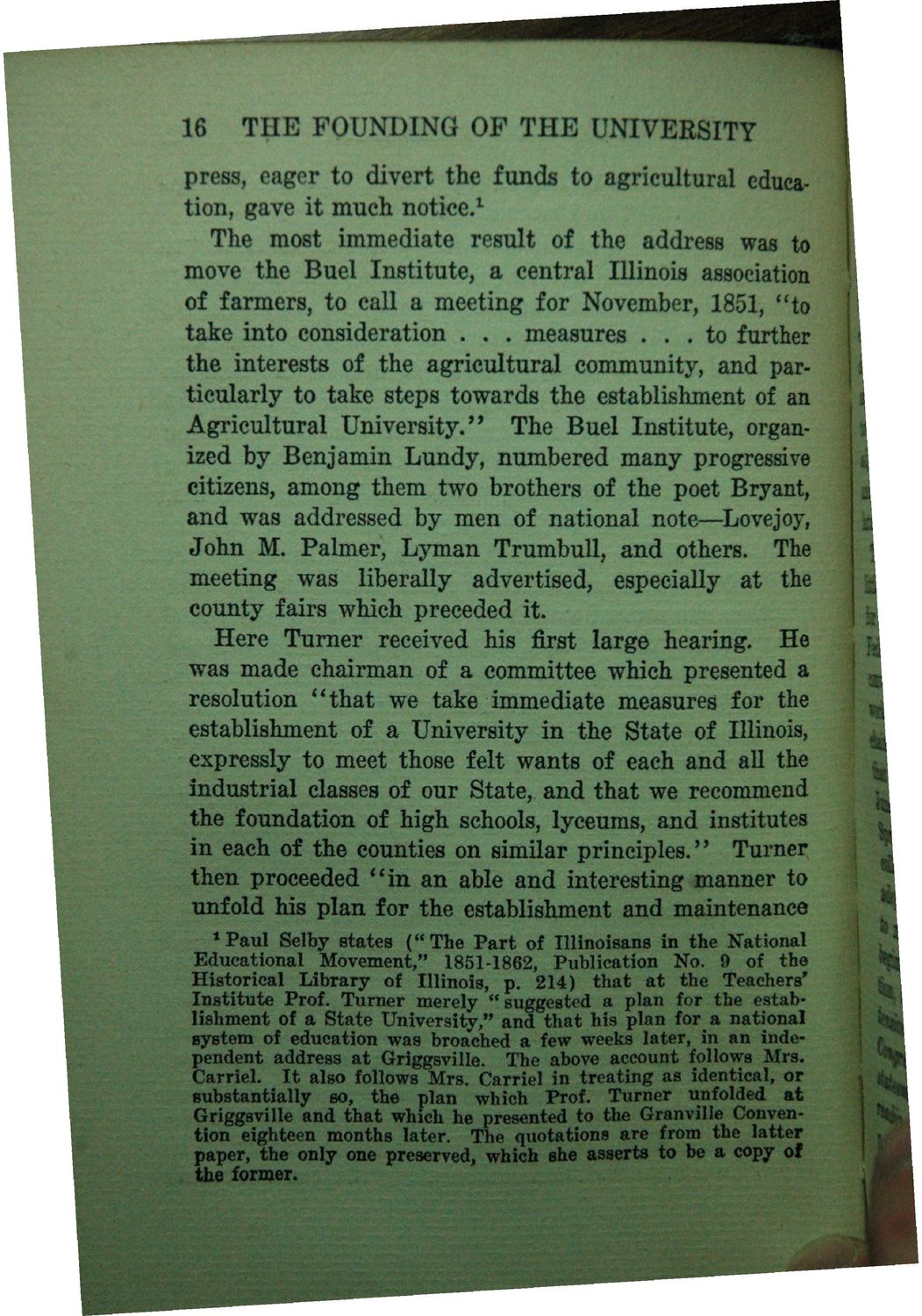| |
| |
Caption: Book - History of the University (Nevins)
This is a reduced-resolution page image for fast online browsing.

EXTRACTED TEXT FROM PAGE:
16 THE FOUNDING OP THE UNIVERSITY press, eager to divert the funds to agricultural education, gave it much notice.1 The most immediate result of the address was to move the Buel Institute, a central Illinois association of farmers, to call a meeting for November, 1851, "to take into consideration . . . measures . . . to further the interests of the agricultural community, and particularly to take steps towards the establishment of an Agricultural University." The Buel Institute, organized by Benjamin Lundy, numbered many progressive citizens, among them two brothers of the poet Bryant, and was addressed by men of national note—Lovejoy, John M. Palmer, Lyman Trumbull, and others. The meeting was liberally advertised, especially at the county fairs which preceded it. Here Turner received his first large hearing. He was made chairman of a committee which presented a resolution "that we take immediate measures for the establishment of a University in the State of Illinois, expressly to meet those felt wants of each and all the industrial classes of our State, and that we recommend the foundation of high schools, lyceums, and institutes in each of the counties on similar principles." Turner, then proceeded "in an able and interesting manner to unfold his plan for the establishment and maintenance *Paul Selby states ("The Part of Illinoisans in the National Educational Movement," 1851-1862, Publication No. 9 of the Historical Library of Illinois, p. 214) that at the Teachers' Institute Prof. Turner merely "suggested a plan for the establishment of a State University," and that his plan for a national system of education was broached a few weeks later, in an independent address at Griggsville. The above account follows Mrs. Carriel.^ I t also follows Mrs. Carriel in treating as identical, or substantially so, the plan which Prof. Turner unfolded a t Griggsville and that which he presented to the Granville Convention eighteen months later. The quotations are from the latter paper, the only one preserved, which she asserts to be a copy of the former.
| |